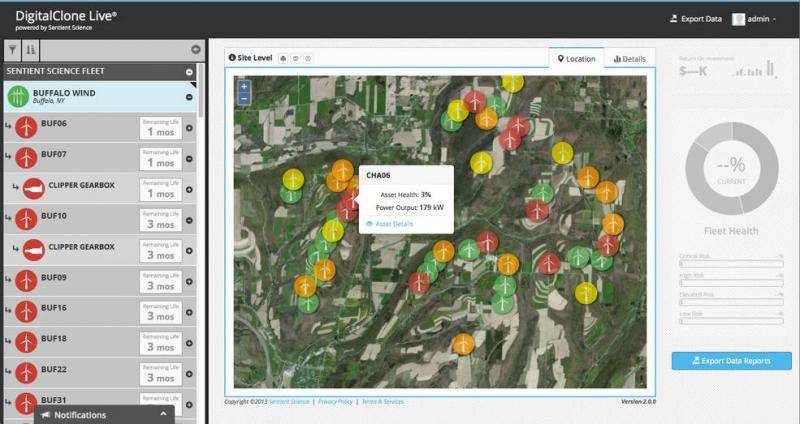Just as medical researchers hope to use DNA analysis to help patients live longer and healthier lives, engineers at Sentient Science are looking to better understand what machines are made of to maximize their lifespans.
"What we set out to do was really hard," says Ward Thomas, president and CEO of the Buffalo, New York-based company. "We set out to decode the material genome."
The potential payoff is significant. It could help guide decisions not just on how to use the machines but on how to design the longest-lasting, most energy efficient systems. And having that information coded into a digital system could be faster, more comprehensive and far less expensive than the previous model of physical testing.
To make it happen, the company worked under a string of Small Business Innovation Research (SBIR) contracts with NASA's Ames Research Center to amass mountains of data on performance of the materials used to make machine parts. The company believed that the resulting software, called DigitalClone, could accurately predict the lifespan of a machine.
But Sentient Science needed to test DigitalClone, and to do that, they needed a machine part that had a long and well-documented history.
Meet Your Digital Twin
Enter another SBIR contract, this time with NASA's Glenn Research Center, in 2010. Tim Krantz, a mechanical components engineer at Glenn, was presiding over a database of test results regarding gears with various shapes, materials, lubrications and processing parameters. One gear design—a spur gear used for helicopter drive-train research—had 25 years' worth of data and proved to be the perfect test subject for DigitalClone.
Sentient Science’s DigitalClone Live product builds sensors into wind turbine gearboxes and uses live data to update performance and failure predictions in real time. DigitalClone Live had its first sale in mid-2013, and by late 2014 it was in use on more than 5,000 wind turbines from eight operators in North America. Credit: Sentient Science
"This NASA gear performance database is pretty unique," Krantz says, explaining that companies often don't release performance data on their products.
As its name suggests, DigitalClone creates a digital twin of a component or system. Based on what it knows about the physics of friction, lubrication and wear, the software then predicts its subject's future performance, lifespan and failure.
To prove it worked, the company's engineers created a digital model of NASA's chosen spur gear to compare their predictions with the historical performance data NASA had gathered.
"It perfectly matched," Thomas says. It was a huge moment: upon hearing of the test results, he quit graduate school to make the company's product commercially available.
World's Most Tested
Sentient carried out 11 more test runs with companies like Boeing, Sikorsky and General Electric. It also continued developing its DigitalClone Live product, which builds sensors into a gearbox and uses live data to confirm and update performance and failure predictions for machinery in the field.
DigitalClone was first shown to work in tests on a helicopter spur gear at Glenn Research Center and, in the following years, came to be used on several military aircraft, including the Super Stallion, pictured here. Credit: U.S. Marine Corps
DigitalClone Live saw its first sale in June 2013, when energy company First Wind signed a deal to outfit gearboxes in 218 of their wind turbines with the technology. By late 2014, Sentient had been contracted to provide prognostic and life-extension services to more than 5,000 wind turbines from eight operators in North America.
The response to Sentient's new approach, using computation rather than physical testing, was swift and enthusiastic.
"Instead of running physical tests for a year and getting three test points, we can give you thousands of test points in days," Thomas says. "You will have the world's most tested products, which will run in the field at the lowest cost to operate."
By late 2014, the technology was in use on the Hubble Space Telescope. The military was using it in the new Joint Strike Fighter F35 and the Blackhawk, Apache and Super Sea Stallion helicopters. Medical device company Zimmer uses it to analyze hip implants.
The eight wind turbine operators who installed DigitalClone Live were able to optimize their machines and bring the price of wind energy from 11 cents per kilowatt hour down to about 3.5 cents.
"This technology is doing as much to make renewables economically viable as the federal government's provisional tax credit," says Thomas. "We're so grateful to NASA for showing up at the time they did."
Provided by NASA


























